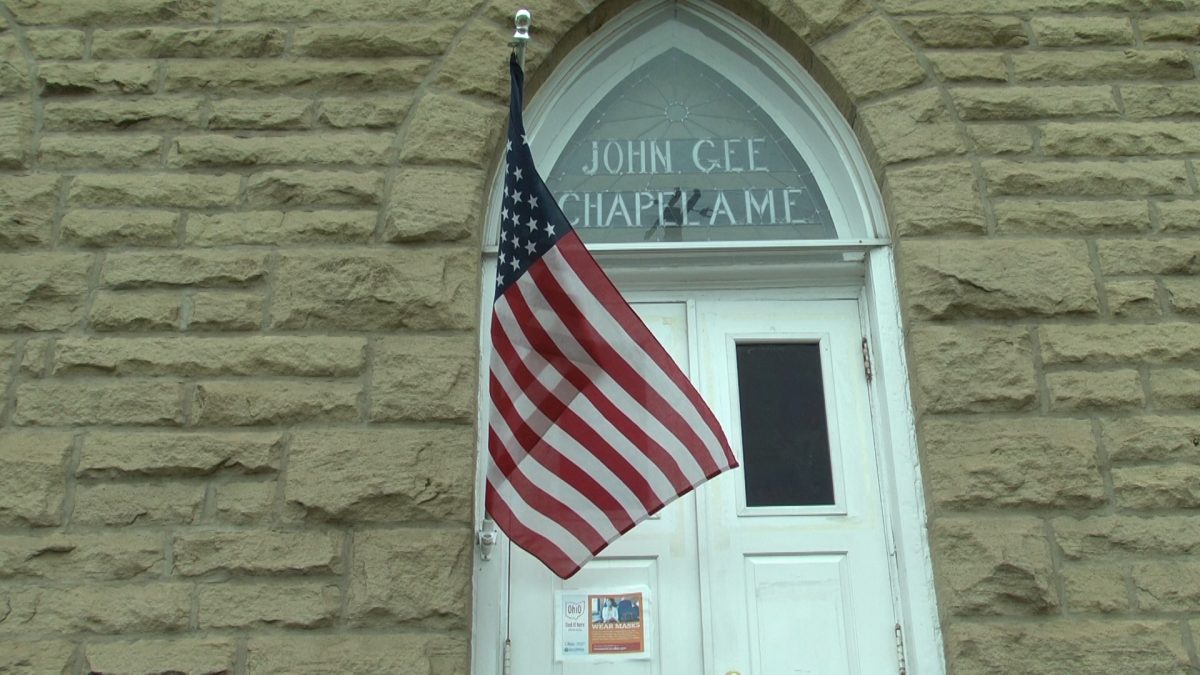
Black Historical Center in Gallipolis Receives Foundation for Appalachian Ohio Grant
By: Destiniee Jaram
Posted on:
GALLIPOLIS, Ohio (WOUB) — A 150 year story of segregation, perseverance and preservation resides in Gallia County thanks to a group working to preserve local Black history.
The walls of the John Gee Black Historical Center in Gallipolis are adorned with local artifacts.
The uniform of a Tuskegee airman and Porter native Henry Norman salutes visitors, black and white photos of the Gallipolis Colored Boy Scouts Troop Number 202 smile back, and archives from emancipation celebrations in Gallia county since 1863 fill an entire table.
“I believe this center is essential to not just Gallipolis but Gallia county and southeast Ohio,” John Gee Black Historical Center President Robin Payne said. “It is important that we preserve our Black history. It’s important that we educate on our Black history so that people can understand why we think the way we do and what angers us and why.”
The Center was originally The African Methodist Episcopal Chapel organized by Gallipolis architect John Gee in 1818. The land was donated by Gee himself, in addition to four acres to be used as a burial ground. At the time, African Americans could not be buried in public cemeteries. The growing congregation met in a schoolhouse on 48 Pine Street in Gallipolis with hopes to build a less modest church in time. The Chapel was renamed after John Gee during the 1800s.
In 1998, the church transformed into the historical center and non-profit headquarters.
The original pews of the Church were given a new lease and turned into bookshelves housing hundreds of books on both local and national Black history.
Today, the John Gee Black Historical Center boasts many impressive firsts for the Black community.
Edward Alexander Bouchet, the first Black person to graduate with a doctorate in physics in the country and the first Black person to graduate from Yale University, taught at the Lincoln Colored School, one of an impressive five schools for Black children in Gallia county. The curriculum for colored schools were more rigorous than their counterparts, even teaching Latin, according to Payne.
Cincinnati’s first Black councilwoman, Mariam Alexander Spencer, is also a native of Gallipolis. Alexander fought for civil rights including the desegregation of Coney Island. She also was the first Black woman elected as president of the NAACP Cincinnati chapter.
Another famous local is poet James Madison Bell, who was born and raised in Gallipolis. He attended the African Methodist Episcopal Chapel as a boy.
These local legends made huge contributions to Black culture and information about each is hung proudly in the Center on display.
Gallia County is also home to the oldest continuous Black Baptist Association in the United States. Photos of past congregations line the walls alongside the records of Black southeastern Ohio history that is meticulously organized throughout the Center.
The goals of the Center are to preserve local Black history and to teach southeast Ohio through educational programs and historical exhibits.
The Center offers programming and events on Black culture, such as an interactive lesson on medicinal plants used by enslaved Americans and an exhibit showcasing communication through the use of quilts – once on display in the Smithsonian.
The Center currently runs on donations. Last month, The Foundation for Appalachian Ohio awarded the Center the Donald R. Myers Legacy Fund Grant. The Grant was created to provide funding to organizations that serve Appalachia Ohio through education, regional networking opportunities, support for community leaders and supplying basic needs. It provided $700 for the Center to improve its facilities.
“The committee really valued just their long history in the county and also the fact that they’ve been a cultural pillar for other southeastern Ohio counties and individuals who want to learn about that history,” Foundation for Appalachian Ohio Program Manager Emily Vigue said.
With these improvements on the way, the Center hopes to now focus more on its programming. It plans to create a program on African American music available in the fall.
The Center is open to the public on Fridays and Saturdays from 10 a.m. to 3 p.m and also by appointment.
Editor’s Note: Mariam Alexander Spencer’s name was corrected.

